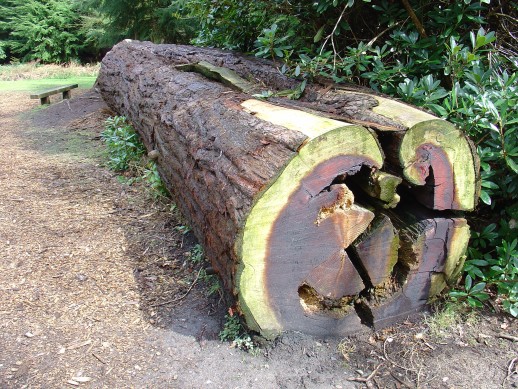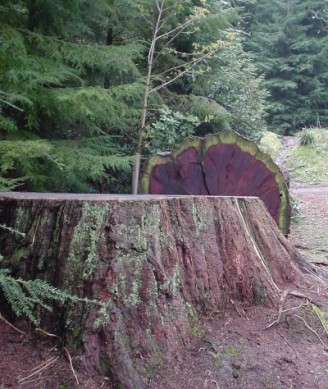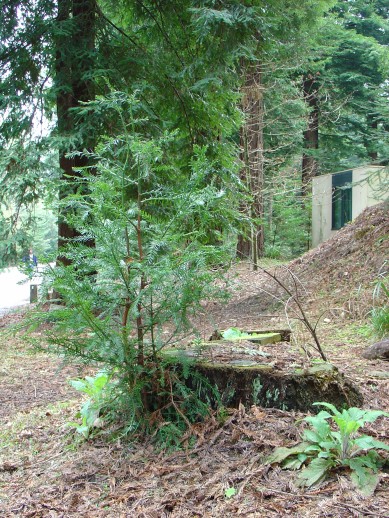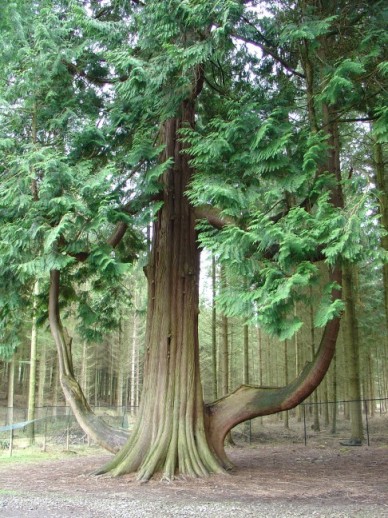


Longleat - Center Parcs (Wiltshire)


  |
 Longleat - Center Parcs (Wiltshire) |
  |
 |
| The above picture shows a magnificent collection of Giant Redwoods (Sequoiadendron giganteum) that were planted in the 1850's by the Marquis of Bath. During the construction of the village, and after its opening in 1995, Center Parcs took great care to ensure these, and other specimen trees, were protected from damage. They diverted footpaths and, in the case of the Giant Redwoods, constructed a board walk to allow people to get close to the trees without compacting the soil around their roots. |
 |
| Bob sent the above photograph of him and his daughter under the trees in 2017. He measured them at 56 metres tall. This measurement is pretty much confirmed by the Tree Register of the British Isles who actually made them a little higher at 58 metres. In any case, as remarked on by Bob, these exceed the tallest that are currently listed on our Top Trunks page. I will have to pay all these trees another visit and then get the table updated. |
  |
  |
| Center Parcs, Longleat is also home to many hundreds of Coast Redwoods (Sequoia sempervirens) which are interwoven among the villas. Cycling among them will give you an appreciation of the enormous numbers of these trees. Where one or two have been felled, they can be seen to be 'sprouting' new growth from the base, as in the picture above. This is a trait of the Coast Redwoods, whereas a trick such as this would not happen if a Giant Redwood was felled. Look out for the tree which has acorns and leaves carved into the bark, and still it sprouts new growth! The last picture shows a peculiar tree at Center Parcs, Longleat, whose branches travel out from the trunk and then turn upwards in an elbow shape. Thanks to Shane who identified this unusual tree as a Western Redcedar. Thanks to Michael who also confirmed that this tree is a Western Redcedar (Thuja plicata). |
